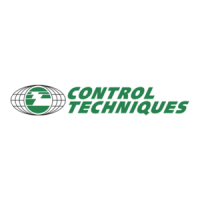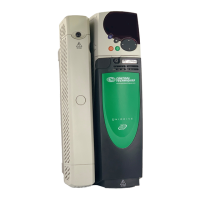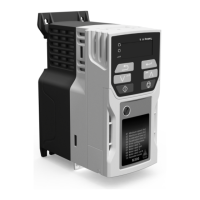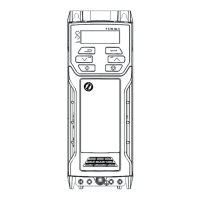
Do you have a question about the Control Techniques Unidrive 1401 and is the answer not in the manual?
| Output Current | 2.8 A |
|---|---|
| Enclosure | IP20 |
| Control Mode | Servo |
| Output Voltage | 0-Input Voltage |
| Communication Interface | RS485 |
| Protection Features | Overcurrent, Overvoltage, Undervoltage, Short Circuit, Over Temperature |
Covers electrical hazards, installation safety, and risk management.
Critical safety instructions for installation.
Details on terminal specifications, torque settings, and routine maintenance checks.
Covers electrical installation, power connections, and critical safety precautions.
Illustrates power connections for Unidrive sizes 3 and 4.
Diagram showing connections for Unidrive size 5 system with multiple power modules.
Guidelines for proper grounding and main power contactor selection.
Details on drive's protection features for the output circuit and motor.
Introduction to EMC compliance with EN61800-3.
Guidelines for enclosure layout, grounding, and RFI filter installation for EMC compliance.
Details on proper grounding techniques and maintaining clearances for EMC.
Detailed points for ensuring EMC compliance, including cable routing and bonding.
Procedures for saving settings and restoring factory defaults.
Explanation of standard and user security settings.
Detailed list of Menu 0 parameters for Unidrive variants.
Covers ramps, speed/current references, voltage boost, and PID gains.
Detailed explanation of stop modes, torque modes, S-ramps, and skip bands.
Comprehensive guide to motor parameter settings.
Details mains loss behavior and current loop gain tuning.
Essential steps for initial drive setup and mode selection.
Step-by-step guide for commissioning induction motors without feedback.
Step-by-step guide for commissioning with speed feedback.
Step-by-step guide for commissioning servo motors with feedback.
Procedure for commissioning open loop drives using PC software.
Procedure for commissioning closed loop vector drives using PC software.
Steps for setting encoder parameters and performing autotune via PC.
Procedure for commissioning servo drives using PC software.
Steps for setting encoder parameters and performing autotune via PC for servo mode.
Details on parameters defining motor characteristics for open loop operation.
Explanation of voltage mode, autotune, slip compensation, and motor speed settings.
Description of motor parameters essential for closed loop vector operation.
Procedures for tuning motor parameters and loop gains.
Guidance on tuning speed loop gains using an oscilloscope or software wizard.
Key parameters for servo motor operation and current loop gain calculations.
Explanation of current limit parameters and speed loop gain adjustment.
Covers current limits, thermal protection, switching frequency, and high-speed operation.
Illustrates the logic for speed reference selection and limit parameters.
Continues logic diagrams for speed references, jog, and skip functions.
Comprehensive table of parameters for Menu 1, including ranges and defaults.
Logic diagram detailing ramp acceleration, deceleration, and control parameters.
Table of parameters for Menu 2, covering ramp settings, selectors, and limits.
Logic diagram for Menu 3, illustrating open-loop speed feedback and frequency slaving.
Table of parameters for Menu 3, covering speed feedback, slaving, and encoder settings.
Logic diagram for Menu 4, illustrating open-loop motor control, current limits, and motor parameters.
Table of parameters for Menu 4, covering motor current, torque, limits, and thermal protection.
Logic diagram for Menu 5, illustrating open-loop motor control functions.
Table of parameters for Menu 5, covering motor characteristics and control settings.
Table of parameters for Menu 6, covering stop modes, auto-start, mains loss, and sequencing functions.
Logic diagram for Menu 7, illustrating analog input and output configurations.
Table of parameters for Menu 7, covering analog input and output configurations.
Logic diagram for Menu 8, illustrating digital input/output functions F1, F2, F3.
Table of parameters for Menu 8, covering digital input/output states and functions.
Lists status indications, alarm indications, and trip log parameters.
Logic diagram for Menu 14, illustrating the PID control loop structure.
Table of parameters for Menu 14, covering PID controller settings, gains, and limits.
Details on different braking modes and the standard ramp voltage parameter.
Explanation of S ramps and various torque control modes.
Details on stop modes and drive behavior during mains loss.
Information on current loop gains and DC Bus voltage control.
Details on sequencing modes and procedure for synchronizing with a spinning motor.
Further details on spin start and position loop configuration.
Details on position loop modes and the hard speed reference parameter.
Detailed explanation of EMC standards and environment categories.
Explanation of trip indications and a table of common trip codes.











